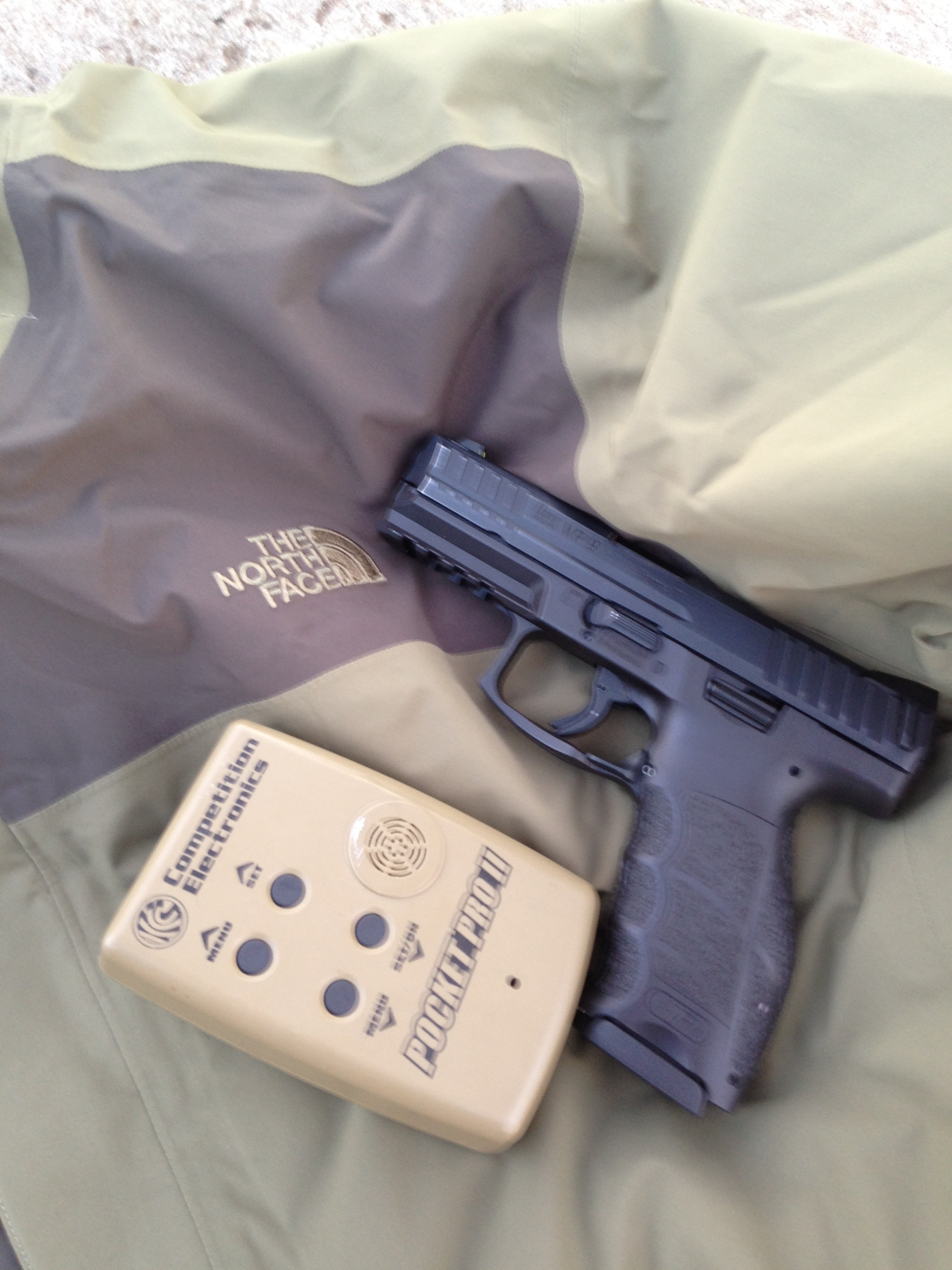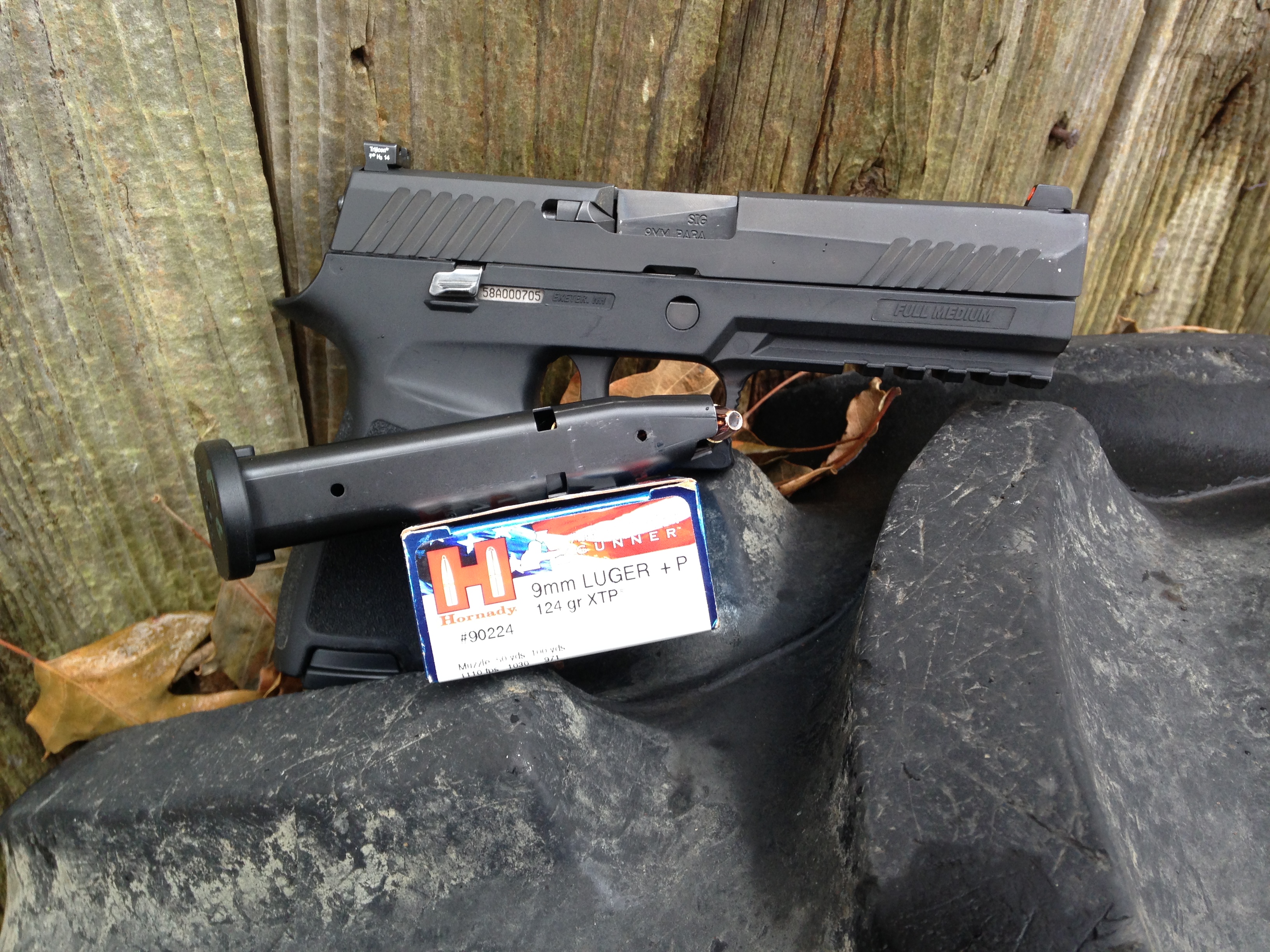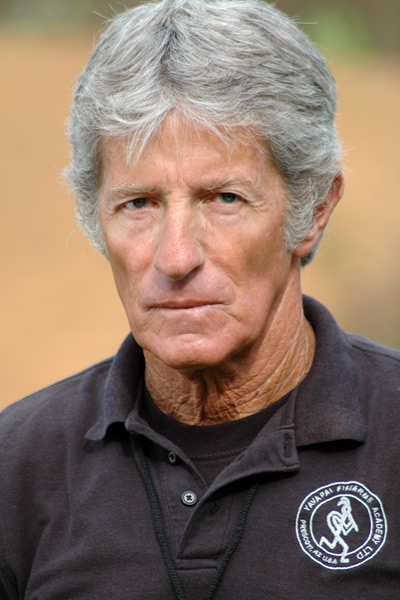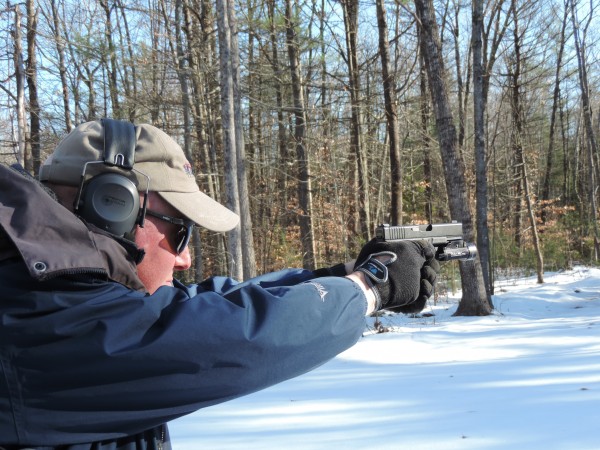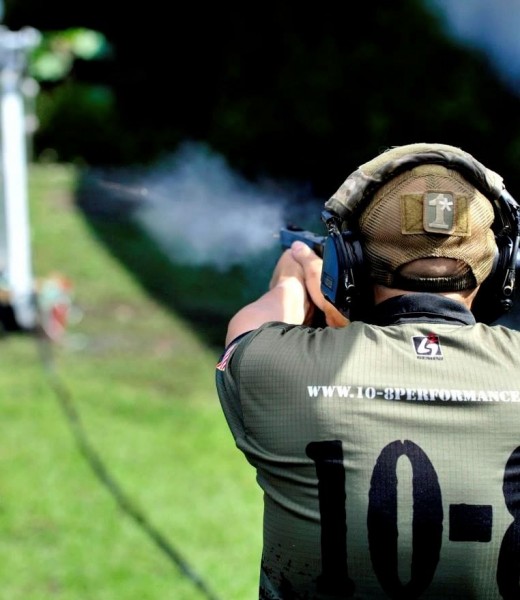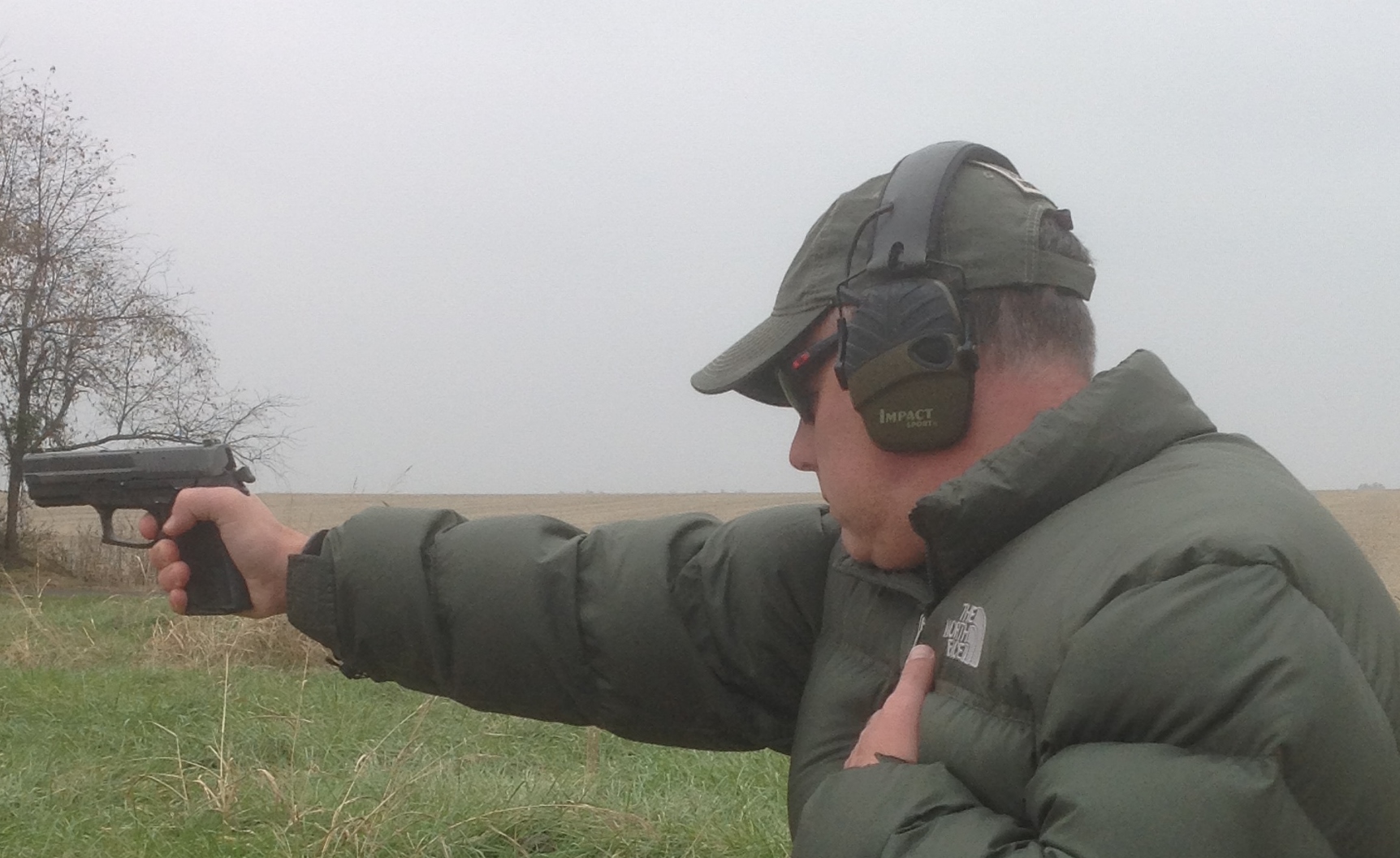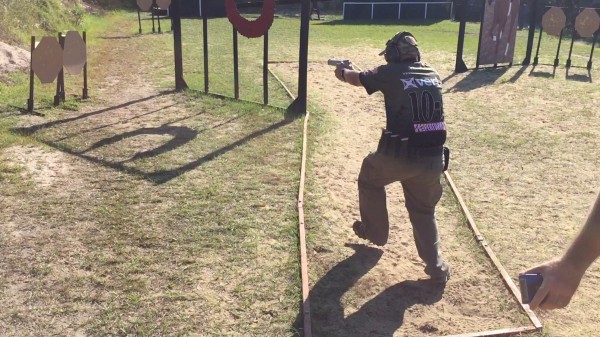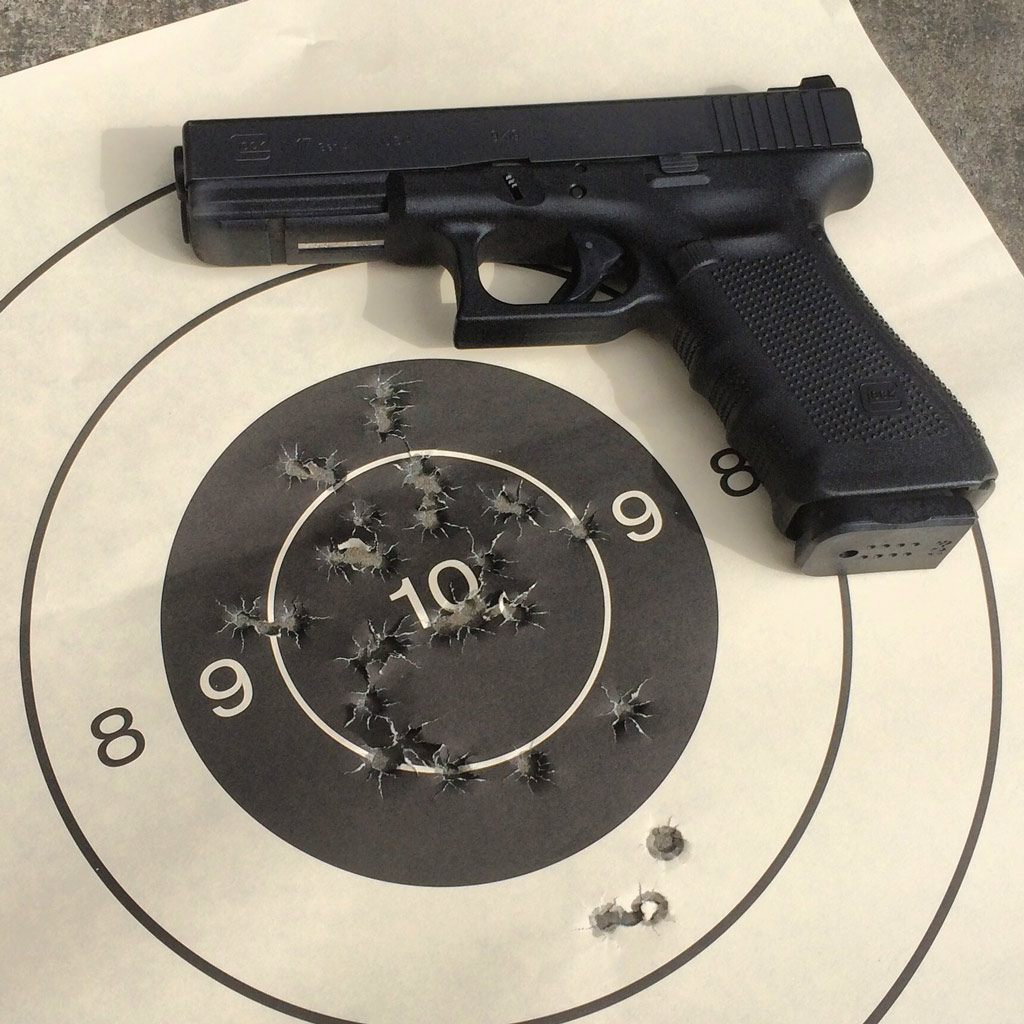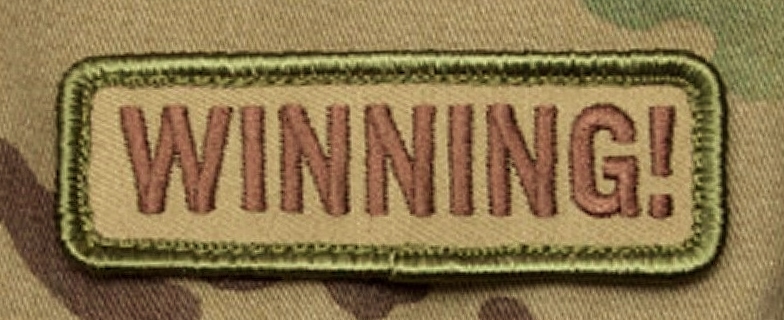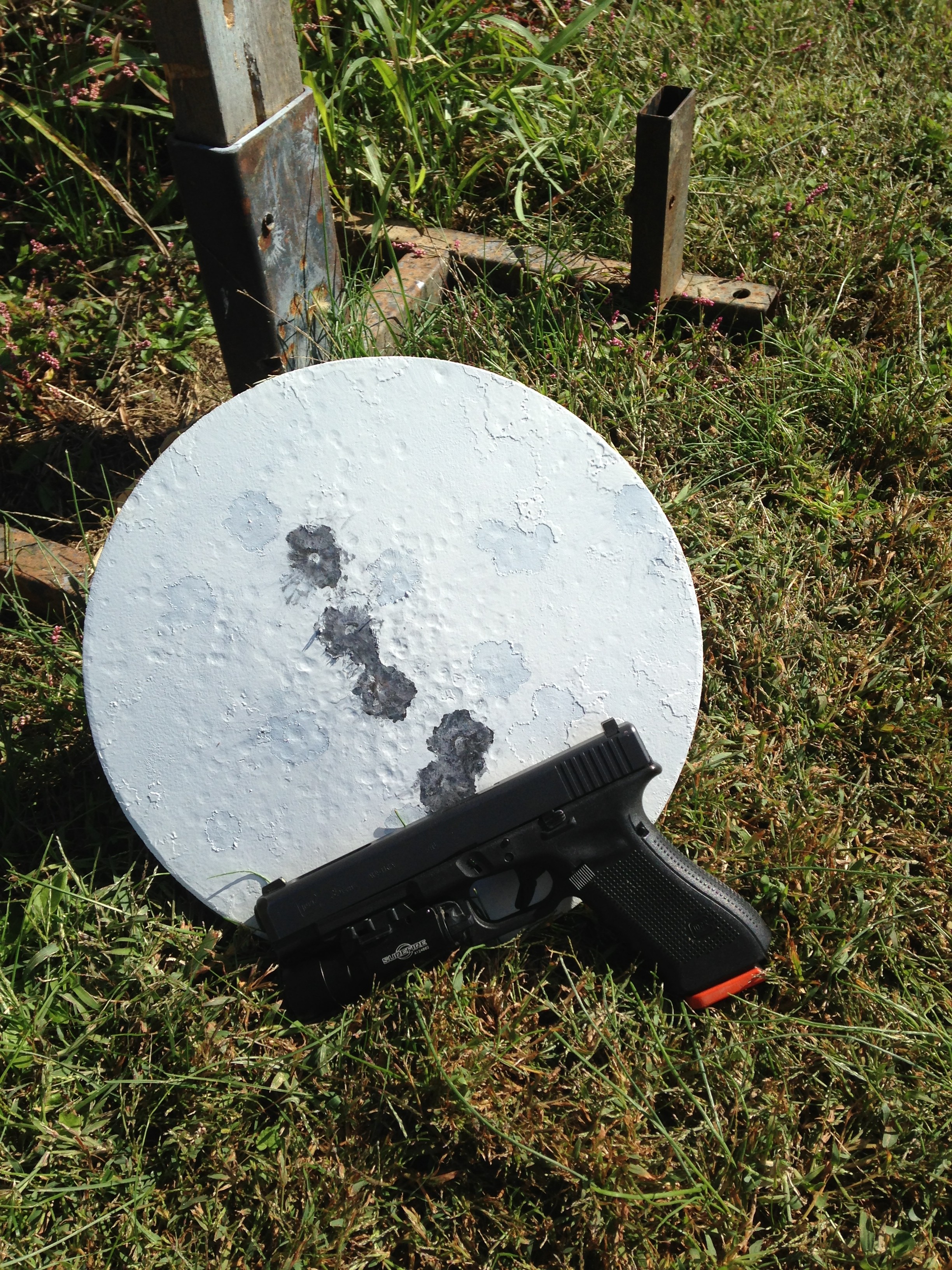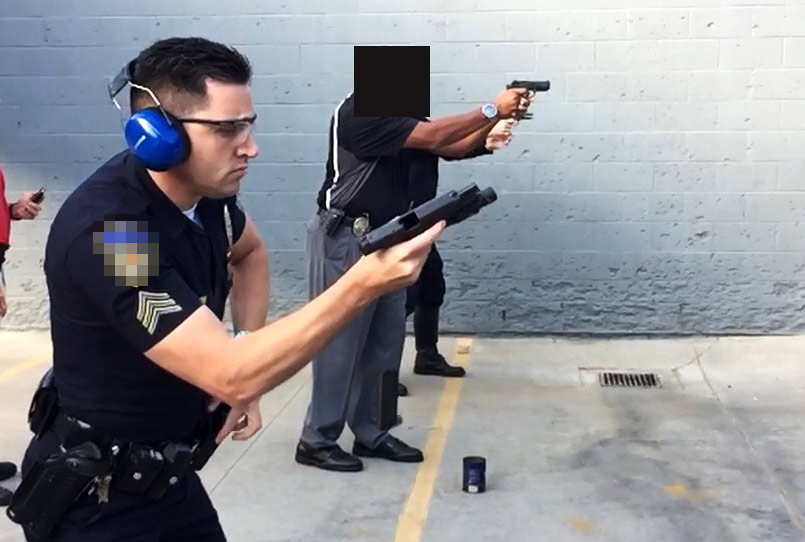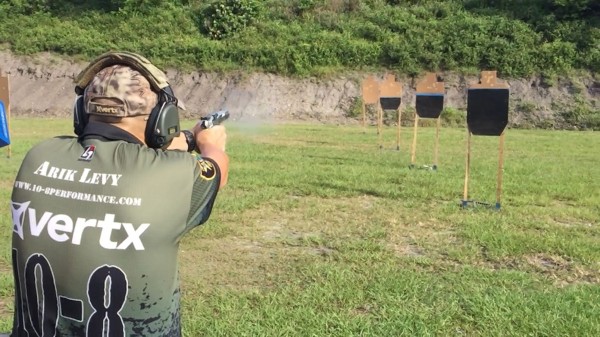Recently, I was evaluating a HK VP9 that was done up by Grayguns, Inc. I was shooting string after string on the timer. I noticed that somewhere south of .22 splits on multi-shot strings, my accuracy fell apart. I dismissed the VP9 as being inferior, due to the stock box P320 Carry giving me nice little piles of bullet holes at .16-.18 splits. Continue reading
Category Archives: Training
NEW- Hornady “American Gunner” line of ammunition
Hornady is expanding their ammunition offerings in 2015. One of the products will be the new “American Gunner” line. I recently came into a couple of boxes of the stuff from another gun writer who was in one of my classes. (Thanks Tom!) Continue reading
LOUIS AWERBUCK REMEMBERED
Who wouldn’t want to be remembered with words like these:
Stubborn, single-minded, articulate, knowledgeable, independent, moral, inquisitive, interesting and accomplished . . .
That’s what Robbie Barrkman wrote of Louis Awerbuck (his friend of 35 years) on his Robar Guns website, after Awerbuck’s death in June 2014. (The entirety of the heartfelt tribute is HERE). Awerbuck’s Yavapai Firearms Academy, with a summary of his resume, is HERE. A 2008 interview of Awerbuck, where he answers well-posed questions on life, death, and equipment, is HERE. Another one, rather well-known, “Interview With A Madman,” is HERE. An interesting commentary on his death, evidencing Awerbuck’s appreciation for warrior history and philosophy, “Requiem For A Soldier,” is HERE. It is said that he was fearless, but carried a high capacity 1911 as a primary, and a Glock 19 as backup. Continue reading
Guest Editorial: Jeff Gonzales on Strength and Shooting
*We are very pleased to feature a guest article written by our good friend, Jeff Gonzales of Trident Concepts. Jeff is an experienced trainer, avid shooter, and long time friend of mine and Tim’s, and we are very excited to have him here. To learn more about training with Trident Concepts, please visit www.tridentconcepts.com – Hilton
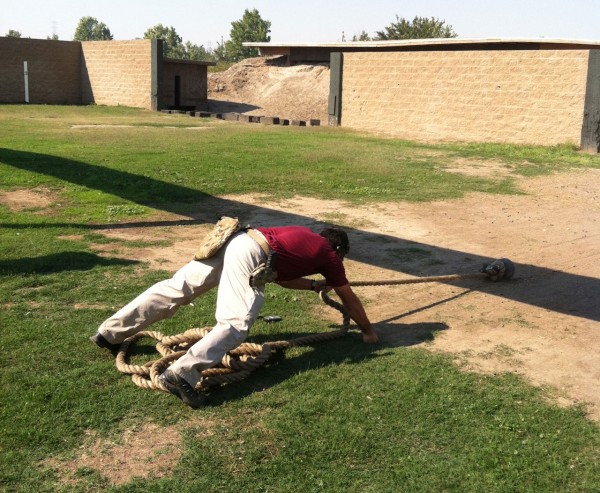
Jeff demonstrates a strength training drill on the range, pulling a weight attached to a length of rope.
Want to get better at shooting? Great, I have two words for you….weight room! Continue reading
Cold Weather Training
For those of us who live in the “Less Temperate” areas of the country. Cold weather training is a reality if you want to keep your training relevant and current. In the Northeast we have approximately 6 months of cold weather and 6 months of not quite as cold weather. There are several differences in cold weather firearms carry and usage that need to be addressed in training.
Controlling time?
Last weekend I was at the range with a party of different shooters and friends. There were several kinds of props and targets and everyone was having a good time shooting. The group consisted of some novice shooters and at one station there was a military guy with his “babe” of a girlfriend. She had taken up a stock Glock and was trying to knock down plates on the plate rack. Well…she was struggling. She was jerking the trigger, throwing shots repeatedly to the left driving through the magazine. At this point, her “stud” came over and told her the all knowing advice of “slow dow and get your hits!” Duh! Just slow down and get your hits. Of course this did NOT go well. Our heroine tried her heart out but only managed to miss slowwwwly. Continue reading
One Handed Shooting
How much do you shoot using one hand only?
The art of one handed shooting is just that….an art. The benefits from learning to shoot with only one hand are pretty self evident. There are lots of scenarios where we find ourselves potentially with only one hand available. Those include injury to one hand, holding open doors, shielding loved ones, holding on to a lead for a K9 for those of us that are/were handlers at one time or another. Continue reading
“LESS-LETHAL” : EDC FOR THE ARMED?
Takeaway — Simple answer: Yes, less-lethal (impact, aerosol chemical, conducted energy) should be considered as a possible EDC adjunct to being armed. If you choose to carry less-lethal, get initial and periodic refresher training from a professional credentialed for the particular type/brand less-lethal weapon. Be prepared to articulate what you chose to carry (likely OC) and why. Update your knowledge base at least yearly for usage studies and legal developments, and to consider any product improvement. If you choose not to carry less-lethal, be prepared to articulate why not. Whichever way you go, expect that somebody, maybe someone whose opinion matters, will second guess you. Continue reading
Training Speed with Accuracy
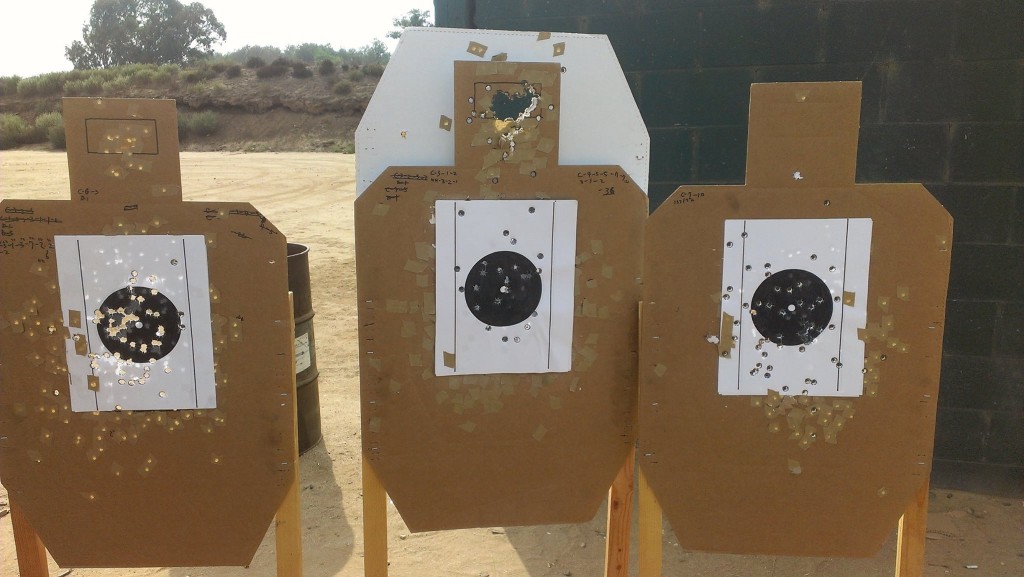
Three pistol targets after some training of speed while still being accountable for accuracy. Photo courtesy of Shin Tanaka.
I was recently surprised by the insight of a Facebook post on the topic of balancing speed and accuracy in training. Not surprisingly, however, was that it came from my buddy, Shin Tanaka. A USPSA Limited Class Grand Master, gifted machinist, 1911 gunsmith, and contributor to Recoil Magazine, Shin is about as well rounded as they come. His post caught my attention as it quantifies a method of balancing your speed and accuracy when it comes to training. According to his post, using USPSA scoring zones, he uses the point system in USPSA to measure whether or not he is being too conservative or pushing his limits. So assuming 5 points for A zone, 4 points for BC zone, and 3 points for D, and 0 points for a no shoot or miss, Shin uses a percentage score to determine whether or not he is pushing his limits. 93-97% of max score is the goal. Above 97% means you need to push the speed harder, and 93% means you need to dial back the speed.
Shooting on the move or move then shoot?
To be or not to be, that is the question…or for us, it’s should I shoot on the move?
As a law enforcement trainer, I am routinely asked to incorporate shooting drills that have the officers shooting while moving. In class, there are always students who push for that type of training especially in anything considered Advanced. But what is shooting on the move? Continue reading
Technical Competence
In my firearms training, I have always placed a high value on technical competence. This is not because I don’t recognize the importance of judgmental shooting training. The two go hand in hand. But technical skill and the confidence that results gives the officer or citizen precious time to make that critical decision under pressure. Confidence lowers stress levels and fosters better decision making. I truly believe that many officer involved shootings that have gone wrong were due to the officer panicking because they did not have confidence in their skillset. They felt that they were “behind the curve” and therefore had to react “faster”, which could result in a questionable shooting. Continue reading
A SHORT ESSAY : WINNING IS EVERYTHING . . . AND THE ONLY THING
From “No Second Place Winner” (© 1965), by William H. (“Bill”) Jordan (p.101):
“There is no second place winner in a gunfight! That sage remark is of unrivaled importance to an enforcement officer. Nothing he can buy from a life insurance firm takes the place of his ability to shoot fast and accurately. Storebought insurance will make his wife a rich widow, but it will be someone else who helps her spend the settlement. Not too attractive a proposition from the masculine point of view. The kind of life insurance he can buy with competent gun handling ability is obviously much more practical.” [You can read/download Jordan’s book, HERE].
MSW posts urging weapon reliability and “get out and train” (whether specialized classes with the been there done everything hardcore trainers, shooting drills on the clock on your own, physical conditioning, and yes, competing) really speak to one thing, winning a life threatening encounter. I wanted to write a post to put out my long-held lament on the subject. It strikes me often: I see streets named after and plaques honoring LEOs killed by the gunfire of evildoers. (I was casually acquainted with several of the deceased LEOs, and a bit more with a couple). But I never see what would inspire and make me feel much better — a street named after an LEO who WON a gunfight. So here it is, to be filed under the CAN element (mindset) of my paradigm on deadly force. Continue reading
Distance, Sight Choices, and Some Random Thoughts.
Here of late, I have been involved with some interesting conversations on active shooter problem solving. I will acknowledge up front that this thought process is somewhat flawed, and borderlines on the academic. I will also acknowledge that I don’t have all the active shooter answers. The answer I think we all can agree upon is the fact that good guys with guns is the answer to the active shooter/mass homicide problem. Continue reading
Skill Drill: Emergency Reloads
One of my responsibilities at the job that pays my bills is to write the monthly qualifications for our personnel. I am always trying to come up with suitably practical, challenging, and reasonable standards. My goal is always to challenge folks to improve their skillset without demoralizing or frustrating them, which is always a fine line. Continue reading
The Problem with…NOW!
Okay…what is he talking about….
Too often it has been my experience with law enforcement shooters (and competition too) that the need to pull the trigger “now” supersedes the requirement of hitting the target. It’s like a building pressure in the mind that shooters will settle for less than an acceptable sight picture and blast off a round..or two..or three. It’s almost as if a self gratifying sound and feeling overwhelms what the process should be. Continue reading



